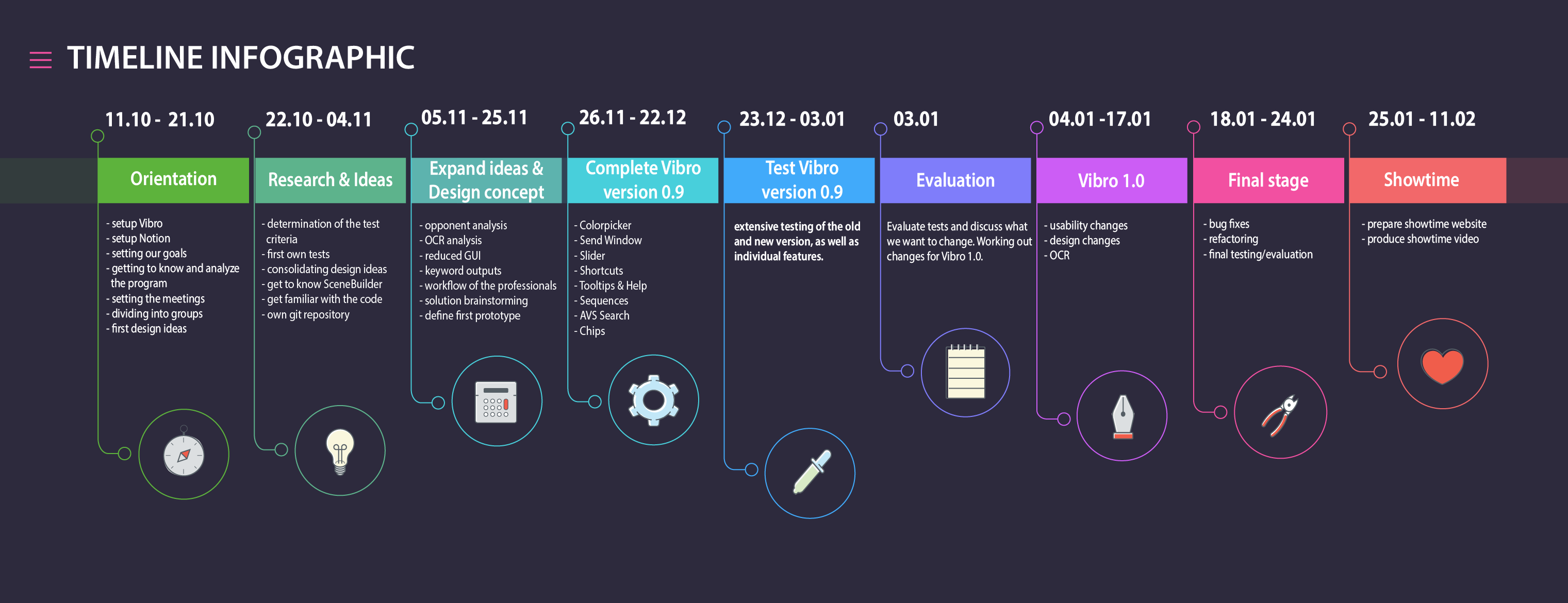Our starting point was an already existing program which we wanted to improve. By both testing the program ourselves to understand and get into Vibro and analyzing the experts view, we evaluated the program to find common errors and see which features are more often used and essential for success. In the next step of our process we derived problems, prioritized them and discussed what we actually want to achieve.
The key problems that we identified were an overwhelming offer of search options and a cluttered interface.
With the help of solution brainstorming, research on opponents and solutions and design sprints we defined the most important things that needed to be changed and brought them together in a concept for our Vibro 0.9 version. With our vision for Vibro to reduce and restructure the interface, while making the usage more intuitive and adding some helpful features, we divided into teams that worked on different tasks. After we implemented all the features and changes we had planned for Vibro 0.9 we went through extensive testing with fixed metrics so we could compare the results to the original Vibro2018. By evaluating our test data we had found that our changes have improved Vibro and we assessed where we still had potential for improvement and what we wanted to adjust for our second version.
We worked out a final concept for our Vibro 1.0 version and implemented our changes. As a last step in our process we tested Vibro 1.0 again to see if we got improvements in comparison to Vibro 0.9.
